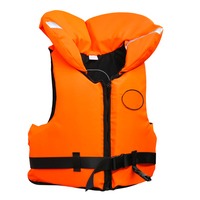
If you participate in water-related activities, you’ve used a life jacket.
Have you ever wondered if they expire? And if you use one that doesn’t belong to you, how do you know the life jacket’s age – and if it is too old to be effective?
Good question. And the answer is: Life jackets DO have an expiration date.
If you have them or are using them, it’s imperative to regularly check their expiry dates to make sure that they will do their jobs if the situation arises.
Well, technically it isn’t the life jacket that expires but the material that it’s made of. That material will lose its ability to retain buoyancy in water over time.
About life jackets.
There are a variety of life jacket types. The most common are the foam life jacket and the inflatable life jacket.
The material in the foam life jacket is susceptible to damage and lower buoyancy due to regular wear and tear. This can affect how it performs and protects the user when they’re in the water. Make sure to store your protective flotation devices in dry cool areas and only use them for their intended purpose.
Inflatable life jackets use a carbon dioxide (CO2) tank to inflate themselves. It’s important to check the recommended tank replacement date before purchasing an inflatable life jacket. These tanks usually have a 1-3 year life span. It’s also important to examine the tank for any damage, dirt, or corrosion every few months.
Testing life jackets.
If you have life jackets, whether a foam or inflatable, that haven’t been worn in a long time it’s best to test them before taking them out for use.
Foam jacket test:
Simply putting them on and floating in calm or confined water conditions.
Vests should fit properly when you float in the water. No vest should not rise up over the wearer’s shoulders when in the water. If the wearer cannot float safely with the life jacket, it can mean that the foam inside has lost its buoyancy and the jacket should be replaced.
Inflatable jacket test:
The process is the same as the foam jacket test. The inflatable jacket should fit snugly – but not overly constricting. The difference here is in making sure the CO2 tank is good by checking the expiration and that the device shows no damage.
Things to remember before heading to the water with your life jacket:
- Check the expiration date.
- Test it.
- Replace it if it doesn’t pass the test.
Remember that a life jacket is a tool to help you to safety. The best way to ensure that you’re always safe in and around the water is to learn to swim.
Little Otter Swim School’s team members are passionate about teaching kids to swim and be safe as they enjoy the water. Learn more about what makes Little Otter different.


Conversations